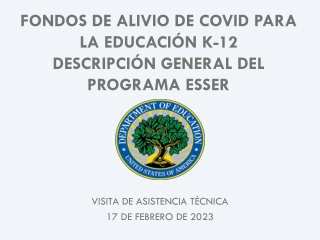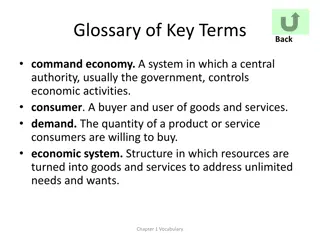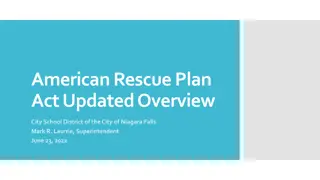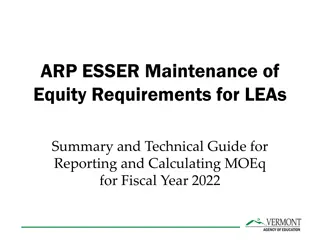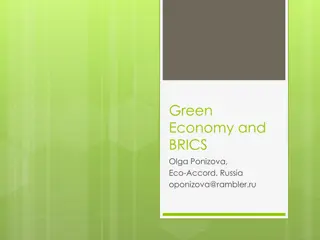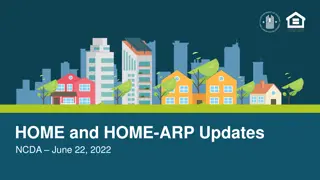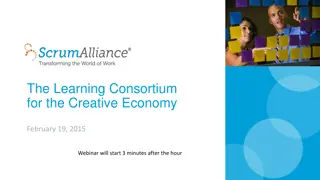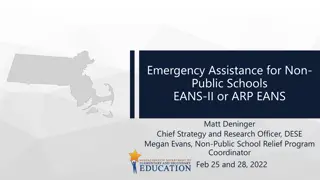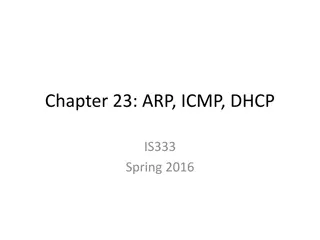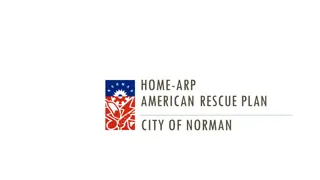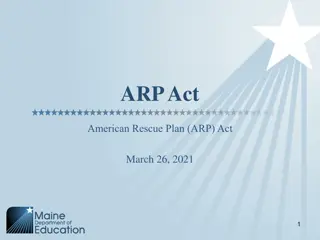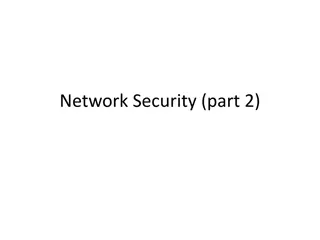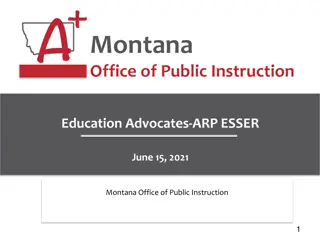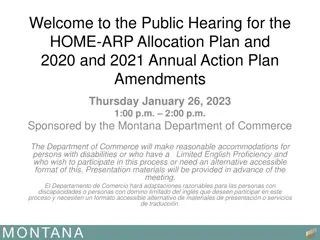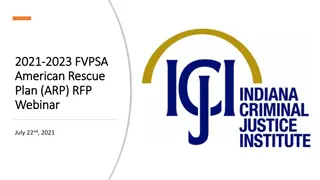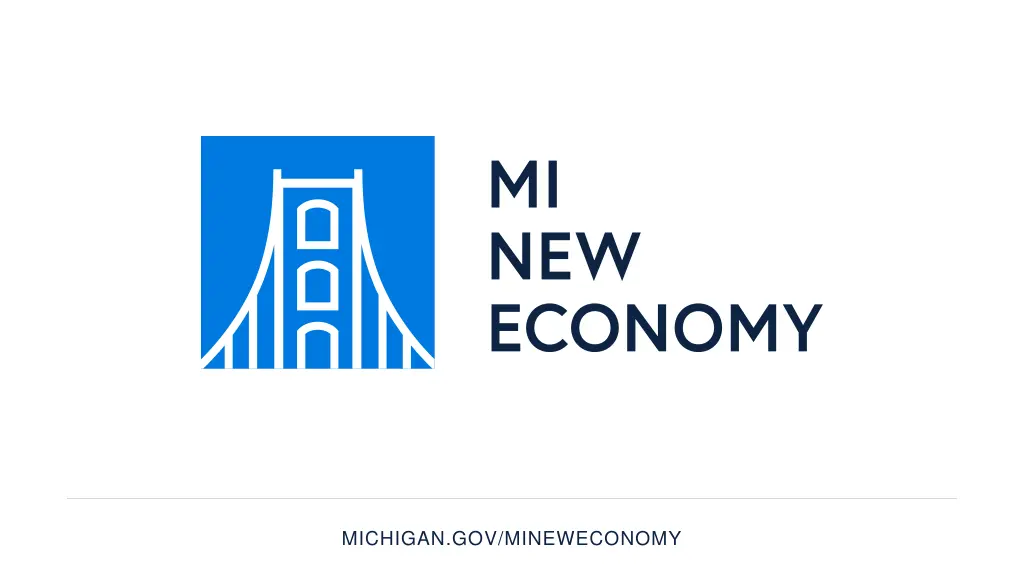
Michigan's Economic Outlook: Governor Whitmer's Achievements and Future Challenges
Discover Michigan's thriving economy under Governor Whitmer's leadership, with low unemployment rates and a record surplus. Explore the accomplishments, including job creation, education investments, and support for small businesses. Learn about the American Rescue Plan's impact and key decision-making criteria for future investments in health, education, and infrastructure.
Download Presentation

Please find below an Image/Link to download the presentation.
The content on the website is provided AS IS for your information and personal use only. It may not be sold, licensed, or shared on other websites without obtaining consent from the author. If you encounter any issues during the download, it is possible that the publisher has removed the file from their server.
You are allowed to download the files provided on this website for personal or commercial use, subject to the condition that they are used lawfully. All files are the property of their respective owners.
The content on the website is provided AS IS for your information and personal use only. It may not be sold, licensed, or shared on other websites without obtaining consent from the author.
E N D
Presentation Transcript
MICHIGANS ECONOMY Under Governor Whitmer s leadership, Michigan has : Low unemployment, below the national average . After the once-in-a-century pandemic, Michigan s economy is poised for a once-in-a-generation comeback. A record $3.5B surplus, up from a projected $3B deficit . The strongest automotive manufacturing nationwide . Won multiple awards and ranks high on multiple lists for manufacturing strength, business climate, job creation and foreign direct investment .
GOVERNOR WHITMERS ACCOMPLISHMENTS Her administration has: Created 15,000 auto jobs . Made the largest education investment in state history . Established Michigan Reconnect and Futures for Frontliners to put more people on a path to high education or skills training. Governor Whitmer continues to be laser-focused on putting Michiganders first. Delivered hundreds of millions in aid to keep small businesses, restaurants and workers afloat during the pandemic . Continued to fix roads and improve water infrastructure while creating tens of thousands of jobs .
The American Rescue Plan provides Michigan with $6.5B at the state level and $4.4B to cities and counties. This investment of federal dollars provides Michigan with a once in a generation opportunity for transformational investments in health, education, infrastructure and economic opportunity.
Seven criteria for decision-making across all investments Pandemic: How does the proposal address issues created by or exacerbated by the COVID-19 pandemic? 1. Equity: Does the proposal address a change in societal opportunity and/or eliminate disparities/gaps in outcomes for underserved and underrepresented populations? 2. 3. Transformational: What is the opportunity for transformation and/or social change for Michigan s residents? Leverage: Does the proposal leverage additional resources from the private, public, and/or philanthropic sectors? 4. Sustainability: How sustainable is the proposal? Will it require ongoing support? What is the potential return on investment? 5. Efficacy:How effective would the proposal be in solving a defined problem? Does it use techniques that are highly likely to achieve the desired outcome? Does it clearly define how success will be measured? 6. Implementation: How much support does the proposal currently or likely will have? Is there capacity to implement it now? 7.
Too Many Low-Wage Jobs 1 Not Enough Workers 2 MICHIGAN S BIGGEST ECONOMIC CHALLENGES More Good Jobs Requires More Skilled Workers 3 4 We Can t Ignore Small Businesses Vibrant Communities are a Driver of Economic Development 5
WHAT IS GOVERNOR WHITMERS FRAMEWORK TO ADDRESS THESE CHALLENGES?
GROW THE MIDDLE CLASS Goals: Build a Talented Workforce North Star Goal Invest in post-secondary education, from short-term skills development and job training to providing access to education at community colleges, as an equitable path to better incomes and better jobs, while addressing the major costs for working families, such as childcare, that prevent families from being able to make ends meet. 60% of adults with a postsecondary credential by 2030 Grow and Strengthen the Middle-Class North Star Goals Lift 100,000 families out of working poverty during the next five years (FY22-FY26) Provide access to low or no cost childcare for 150,000 more families by 2024.
ARP PROPOSALS: $722M to grow the middle class and educate workers Draft Proposal Description Policy Goal(s) Scale Going PRO to address skills gap for MI businesses, while providing credentials for workers. Skills Gap; 60x30; Better Jobs & ALICE Rate Going PRO Expand the eligibility for both F4F and Reconnect and provide additional funding to meet demand. 60x30 F4F/Reconnect Expansion Student success grants and support for benefits access to improve likelihood of degree completion. Wraparound Supports for F4F/Reconnecters 60x30 Scholarships to increase college affordability for low-income families for graduating classes impacted by the pandemic. COVID Class Connect Back 60x30 COVID Near Completers Fund First-dollar scholarships for students who have completed nearly all of the necessary requirements to earn a degree. 60x30 Competitive grants to colleges to reform policies and practices to improve student success outcomes, including employer and partner-driven curriculum development. Investments in data systems improvements. Strengthening College to Industry Pipeline Skills Gap; 60x30
ARP PROPOSALS: $722M to grow the middle class and educate workers Draft Proposal Description Policy Goal(s) Provide funding to jump-start, reinforce, and enhance the performance of current Registered Apprenticeship expansion efforts, leading to more apprenticeships for underserved and underrepresented Michiganders. Right Skills Now through State Apprenticeship Expansion Skills Gap; Better Jobs & ALICE Rate Everybody In: Path to Reconnect for Individuals without HS Degree Support enrollment in a state-approved adult education program to earn a high school diploma or equivalent, and concurrent enrollment at a community college or a state-approved training program. Labor Force Participation; ALICE Rate; 60x30 Labor Force Participation; ALICE Rate; 60x30 Education & Employment (E2) Program Provide an opportunity for adults to earn a high school diploma or equivalent and gain work experience earning a living wage through subsidized employment. Scale up successful local non-profit partnerships to provide transitional employment and vocational services that specialize in working with the reentry population. Labor Force Participation; ALICE Rate; Reduced Recidivism Michigan Second Chances Program Financial relief and assistance to strengthen the non-profit ecosystem that provides support for families struggling to make ends meet. ALICE Rate; Labor Force Participation Michigan Nonprofit Relief & Activation Program
SUPPORT SMALL BUSINESS Support Small Businesses North Star Goal Goals: Top ten statefor small business job growth and revenue growth from 2022 to 2026 Transform economic development in the state by implementing the state s first comprehensive small business strategy that includes focusing on microbusinesses, while focusing traditional economic development towards creating good and promising jobs that make Michigan s economy more resilient and equitable. o Focus on underserved communities o Top ten for both microbusinesses and second stage businesses Create Good Jobs & Support Innovation North Star Goals Top ten state for household income growth during the next five years (FY22-FY26) Top ten state for growth in venture capital funding over the next five years (2022-2026)
ARP PROPOSALS: $651M to support small businesses and create better jobs Draft Proposal Description Policy Goal(s) The program includes capital support for restaurants and place-based businesses, microenterprises and invests in creating small business smartzones/accelerators. Small Business Survival and Growth; Better Jobs Michigan Mainstreet Initiative Capital infusion to entrepreneurship ecosystem including investments, grants and technical assistance, to bolster promising high-tech, high-growth start-ups. Start-Up Resiliency Initiative Stronger Entrepreneurship Funnel Overall; VC Investment; Better Jobs Prepare Michigan s small manufacturers and workforce for opportunities in emerging industries, with a focus on providing support for underemployed and displaced workers. Retraining and Retooling Fund Manufacturing Competitiveness; Better Jobs & ALICE Rate; 60x30 Speed up state-led charging infrastructure buildout and create visionary programs to accelerate EV adoption, as well as spur EV innovation at Michigan testing sites. EV Friendliness Ranking; EV Adoption Rate; Better Jobs Michigan Electric Vehicle Friendliness Program Scale the STEM Forward program, which provides interns to STEM students and invest in capacity-building for talent attraction and retention. STEM Talent Attracted and Retained; 60x30; Better Jobs Talent Attraction and Retention
BUILD STRONG COMMUNITIES Invest in Our Communities North Star Goals Goals: 100% access to high-speed internet and 95% adoption by households during the next five years while continually investing in higher quality access (FY22-FY26) Create a strong foundation for communities to grow by making historic investments in broadband, housing, and other critical infrastructure. 75,000 new or rehabilitated housing units in five years (FY22-FY26)
ARP PROPOSALS: $800M to build strong communities Draft Proposal Description Policy Goal(s) Invest in the HCDF, a powerful tool that will foster innovation and creativity in both affordable and attainable housing creation. Housing & Community Development Fund New/Rehabbed Housing Units Increased Regional Alignment Around Policy Goals; Increased ROI for MI's ARP Investments Overall Regional Resiliency Fund Fund the creation of Regional Economic Resiliency Plans and regional projects and/or programs that support the implementation of these plans. The Brownfield Bridge Fund awards will provide a benefit equivalent to a performance-based grants support redeveloping brownfield sites to create housing or infrastructure for industrial spec buildings. New/Rehabbed Housing Units; New/Rehabbed Infrastructure at Sites for Business Development; Better Jobs Brownfield Bridge Fund Grants for the rehabilitation of vacant buildings, repurposing of space, or the creation of social-zones to build stronger and healthier neighborhoods and communities. New/Rehabbed Housing Units; Increased Commercial, Residential Occupancy at Blighted/Underutilized Properties Community Revitalization & Placemaking Grants Create healthier, cleaner, and more energy efficient homes by expanding the capital available for clean energy improvements through the low-income housing tax credit program, property improvement program and the neighborhood enhancement program. Decreased Household Energy Costs; Decreased Carbon Footprint Residential Clean Energy Improvements Invest in making crucial infrastructure and other site improvements that will increase Michigan s inventory of sites 300 acres and larger. New/Rehabbed Infrastructure at Sites for Business Development; Better Jobs Large & Strategic Site Development
Better jobs o More small businesses survive, grow revenue and better jobs. o More start-ups survive, commercialize technology, and get funded by angels and venture capital investors, leading to better jobs. Increased ARP ROI o Greater alignment on ARP investments with and among local governments. o Increased amount of STEM workers. More housing and reduced costs o Increased EV friendliness, leading to more EV jobs. o New and rehabbed housing units. o Stronger manufacturers providing better jobs. o Reduced residential energy costs. Improved infrastructure o Infrastructure improvements at sites for business development. 60x30 Increased commercial and residential occupancy in downtown spaces o More BAs, ADs, and industry recognized credentials. Increased labor force participation Lifting families above ALICE Decrease in labor supply-demand mismatch
SUMMARY OF VISION PILLAR 1: GROW THE MIDDLE CLASS PILLAR 2: SUPPORT SMALL BUSINESS PILLAR 3: BUILD STRONG COMMUNITIES To supplement the great economic development work our state already does, Michigan needs to focus on creating and growing more Main Street businesses. No economic vision for the state can be complete if it doesn't focus on eliminating poverty and lifting families into the middle class. Michigan's residents deserve to live in vibrant communities with services and amenities associated with a high standard of living. Goals: Goals: Goals: 60% of adults with a postsecondary credential by 2030 . 100% access to high-speed internet and 95% adoption by households during the next five years, while continually investing in higher quality access (FY22- FY26) . Top 10 state for small business job growth and revenue growth from 2022 to 2026 . Lift 100,000 families out of working poverty during the next five years (FY22-FY26) . Top 10 state for household income growth during the next five years (FY22-FY26) . 75,000 new or rehabilitated housing units in five years (FY22-FY26) . Top 10 state for growth in venture capital funding over the next five years (2022-2026) . Provide access to low or no cost childcare for 150,000 more families by 2024.

